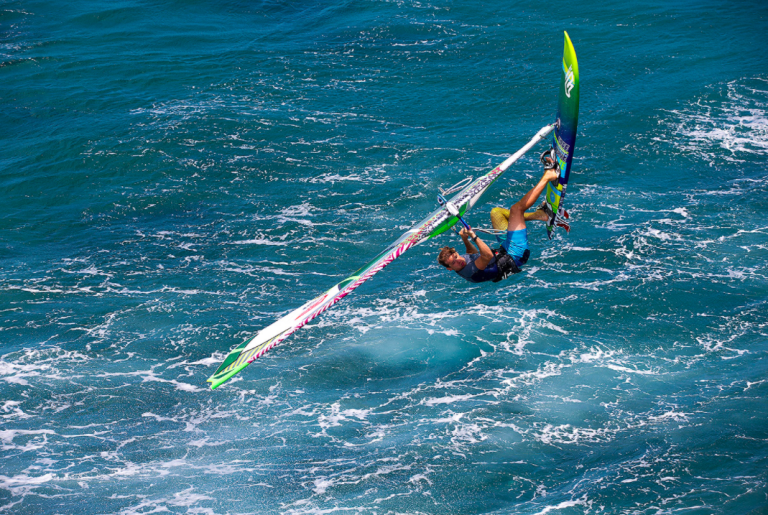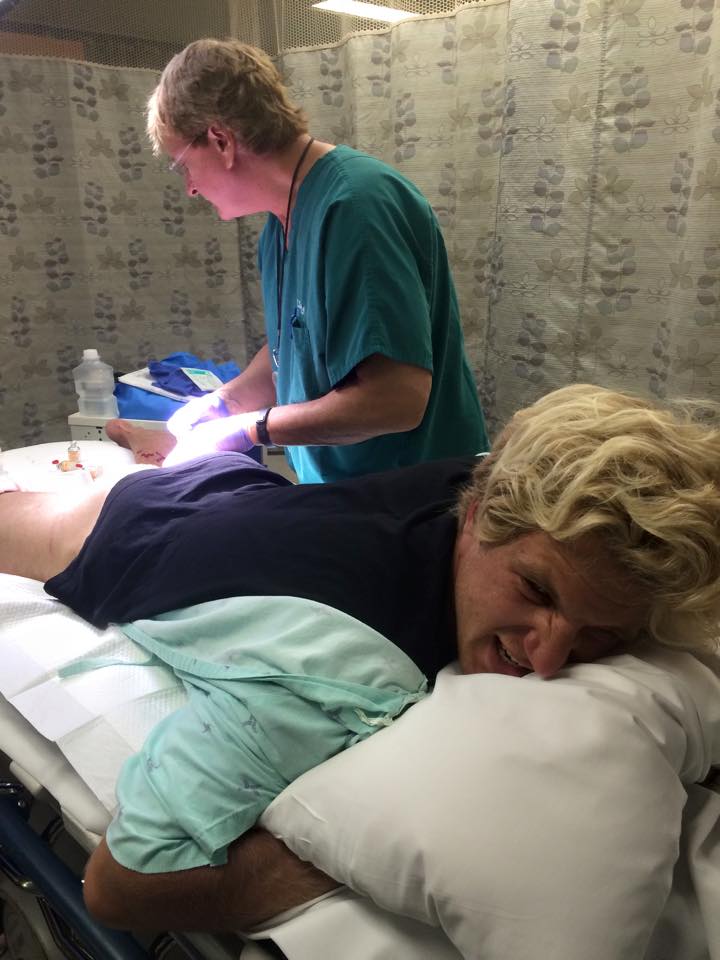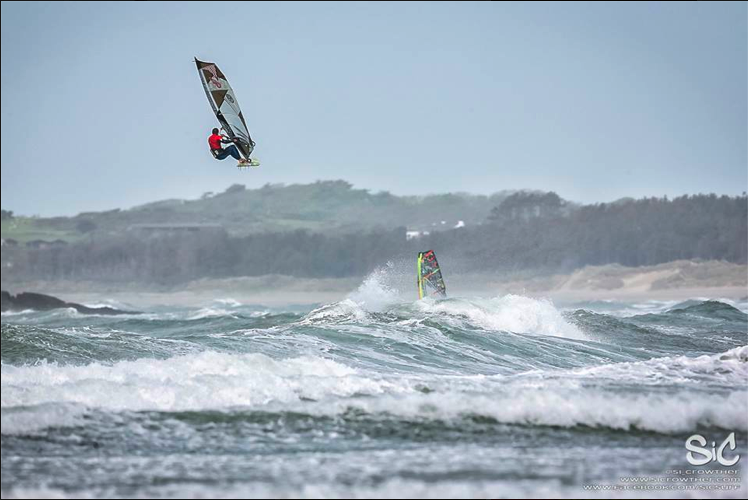1-5
Max Rowe and Andy ‘Bubble’ Chambers are not only professional windsurfers, but experienced coaches too. Throughout their time windsurfing and instructing, certain common mistakes have cropped up again and again, both on the water and on the beach. Max and Bubble join Boards to share the most frequently seen windsurfing errors, and explain how fixing them could help improve your windsurfing.

1. NOT CHANGING DOWN
Everyone will admit to having that huge fear of being underpowered and for this reason far too many of us will rig big and then just hang on, as we’ve got the fear of the wind dying. In reality, you’re more likely to be able not only to maximise your sailing hours but also feel like you’re in enough relative control to try something new if you do change down that little bit sooner.
2. FOOTSTRAPS TOO SMALL

They are called footstraps for a reason; your foot is supposed to be inside them! The ideal size for general freeriding is to be able to see the knuckles of your toes poking out the other side of the strap. Having the straps this big makes it possible for you to balance properly on the balls of your feet during manoeuvres, instead of feeling like you are prancing around on your tiptoes. Bigger straps will also allow for your foot to be released from the strap easier if something does go wrong. Generally speaking, the bigger your straps, the easier your foot can come out, and the less likely you are to get injured.
3. TOO MUCH OUTHAUL
This is the biggest killer of having a comfortable feel from your sail; too much outhaul will give your sail a horrible, twitchy feeling. The most important thing here is to not just take what is written on your sail as gospel, remember the boom length is measured from one point and the boom length required can change a lot depending on whereabouts it is positioned in the cut out.
Placing your hand over the sail, in line with the boom clips, you should be able to comfortably press and touch the other side of the boom. Obviously, you can increase and release tension when required depending on what the wind’s doing, i.e. more tension for stronger winds. With this in mind, still remember on your smaller sails that they will naturally feel twitchier, so be gentle with how much tension you’re putting on. Don’t be afraid to allow the sail to touch the boom whilst you’re sailing.
4. THE NOSE SINK TACK
The nose sink tack used to actually be a move back in the ‘80s…but it was more of a freestyle move. Nowadays some of you seem to still be trying to do a nose sink tack, whilst learning to do a normal short board tack! Sinking the nose is very common when learning to tack; especially with the new school, shorter, wider boards. However, these new wider boards can actually help you a lot; they have the width around the mast-track area meaning you need to keep yourself around that area, when moving your feet. They also stay planing for longer and are more stable at low speeds. This allows you to change sides nice and early, before the board has come to a complete stop. Changing sides while the board is still moving will stop you from driving the nose underwater; have a look at the light wind sailing section following for another tacking tip.
5. NOT ENOUGH LIGHT-WIND SAILING
Light-wind sailing can drastically improve your windsurfing. Not so much the blasting around element, but certainly the manoeuvre based element. Throwing the sail around in light winds on a big board helps to improve your sail control. You learn to move your hands around on the boom and to keep light fingers, which stops you from gripping on so tight that your knuckles go white! You should never feel like your hands are superglued to the boom, it allows you get much more of a feel for the sail. Light-wind sailing especially helps to learn some of the backwind moves like heli tacks and the end of downwind 360s. The short board tack is another move that you can learn the technique of getting round the other side of the sail earlier on a long board in light winds. It’s time to dust off that old long board in the garage or use a SUP.





